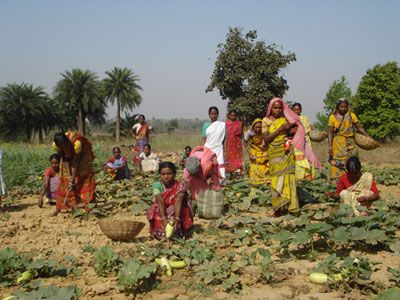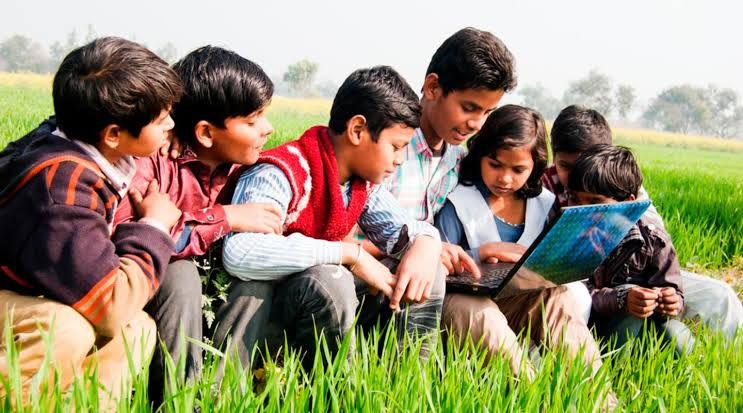Rural Development In India
Feb 09, 2019 • 18 views
India lives in villages. About 70% of its population lives in villages, scattered all over the country like stars in the night sky. About 96% of India’s geographical area is covered by villages. The vast majority of India living in rural areas cannot be taken lightly in any planning aimed at socio-economic development of the country.
It is now increasingly being felt that no planning can be successful unless more and more attention is paid to rural development schemes and poverty alleviation programmes. Therefore, many new schemes to ameliorate the conditions of the rural population are being launched, and the old ones are being completed expeditiously. That this rural bias and thrust has registered a success is evident from the fact that the poverty line has come down significantly, from over 57% in 1961 to 26% in 1999-2000. The implementation of various community development programmes in the first three Five Year Plans and specific poverty alleviation and unemployment removal programmes during the Fourth, Fifth, Sixth, Seventh, Eighth and Ninth Five Year Plans have gone a long way in the upliftment of the masses in the villages.
The quantum of financial assistance and allocation under the Ninth FIVE Year Plan was raised substantially and many major structural changes have been effected to achieve the targeted goals of rural development, poverty alleviation and employment generation schemes. Consequently, the number of beneficiaries is rising rapidly. The Constitutional sanction granted to gram panchayats, etc. has further boosted the morale of rural institutions.

Integrated Rural Development Programme (IRDP) is a major instrument to alleviate rural poverty. The main objectives of IRDP are to raise families of the identified target group above the poverty line and create substantial opportunities of self- employment in the villages. The funds for this programme are shared 50: 50 between the Centre and the states. In case of the Union Territories, complete financial assistance is provided by the Centre. The scheme is being implemented through the District Rural Development Agency (DRDA) and block level functionaries at the grass root levels. At the level of the state, there is a co-ordination committee headed by the chief secretary to look after its overall implementation. IRDP was first launched in 1978-79 in 2,300 blocks and was extended to cover all the 5,011 blocks of the country from October 2, 1980.

The scheme, meant to improve the social and economic condition of the poorest of the rural poor, is being evaluated through research conducted by independent and government institutions. According to the report of January-December 1989, about 20% of the old families crossed the poverty line of Rs. 3,500 and 28% of the revised poverty line of Rs. 6,400. However, about 78% of the families had incremental income. Nearly 34% of the assisted families belong to destitute and 46%, very poor groups. The major impact of the scheme is that it benefits the poorest and the most deprived sectors of the society. The families eligible for help under the scheme are those where the annual family income is less than Rs. 4,800 per year. It also includes families of small and marginal farmers whose operational holding is less than 5 acres of land. The final selection of these poor families is done through gram panchayats and gramsabhas. Special attention is being paid to women. They are organised in groups forproductive activities. These groups are given training and provided with suitable monetary help for increasing their family income.
Similarly, various pilot projects have been launched to generate employment. These include Crash Scheme for Rural Employment (CSRE), Pilot Intensive Rural Employment Programme (PIREP) and National Rural Employment Programme. These schemes and programmes specifically aim at generating additional gainful employment opportunities, creation of durable community assets and improvement of overall quality of life in the rural areas. To improve the lot of landless labourers, the Rural Landless Employment Guarantee Programme (RLEGP) was launched in 1984. The programme guarantees employment to at least one member of every landless labour family up to 100 days in a year. The Jawahar Rozgar Yojana is an ambitious programme being implemented through the village panchayats. It seeks to guarantee employment to at least one person in a rural household living below the poverty line. It was launched in 1989. Swaranjayanti Gram Swarozgar Yojana, launched in April 1999, is a new scheme for rural development.
The budget for the year 1995-96 was again a village- oriented one,’ in which many gifts were given to the rural masses. It envisaged establishment of Rural Infrastructure Development fund, a technological development and modernisation fund for small scale industries, with Rs.200 cores initial capital, a National Social Assistance Scheme to give a minimum old age pension and lump sum survivor benefits to the poor and maternity benefits to poor women, among many other schemes. It also proposed to set up an exclusive line of credit of Rs. 400 cores to co-operative and regional, rural banks to meet the needs of scheduled castes and tribes in a 100-odd predominantly rural, tribal districts. There is also a proposal to begin a Group Life Insurance Scheme of the LIC to be implemented by the panchayats in rural areas. The liberal package for the rural poor and vulnerable sections of the village society is laudable, but the main problem is that all the benefits do not reach the targeted poor people. Much of the funds are misappropriated by intermediaries responsible for the implementation of these packages.
